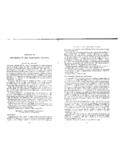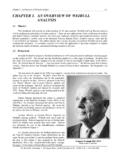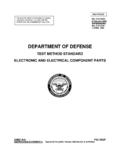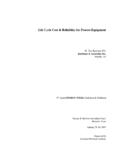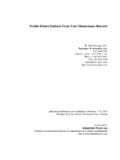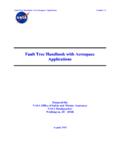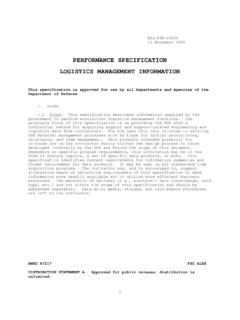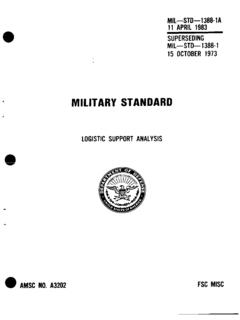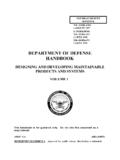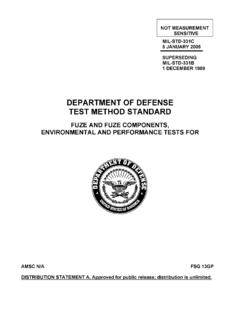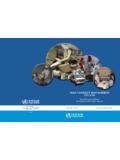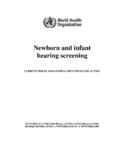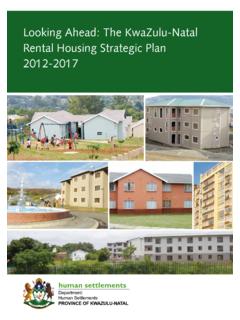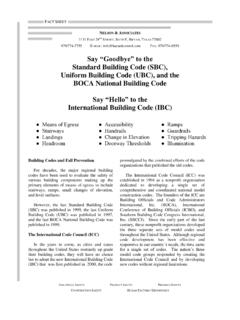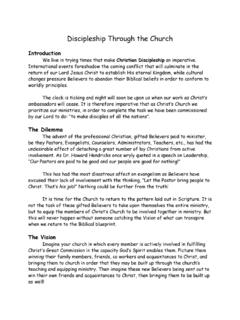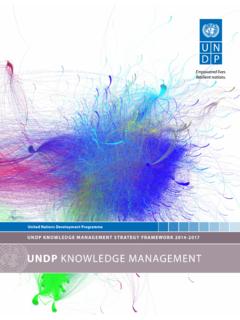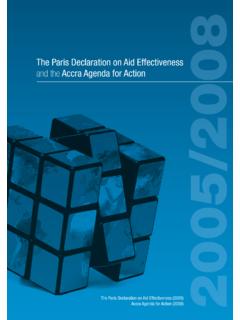Transcription of Reliability Reliability Engineering Principles Engineering ...
1 Reliability Engineering Principles A three-day basic training course in Reliability for engineers that is long on practical problem solving and short on statistics The training course is offered by: Paul Barringer, Barringer & Associates, Inc. Box 3985 Humble, TX 77347-3985, USA Phone: 1-281-852-6810 FAX: 1-281-852-3749 Email: Website: Manufacturing, Engineering , and Reliability Consultants Barringer & Associates, Inc. 2000 Page 1 Reliability Engineering Principles Reliability is an Engineering discipline with specific Principles . Reliability applies scientific know-how to a component, assembly, plant, or process so it will perform its intended function, without failure, for the required time duration when installed correctly, and operated correctly in a specified environment.
2 Reliability terminates in a failure then businesses incur the high cost of unreliability. High cost motivates Engineering solutions to Reliability problems for controlling and reducing costs. You may not know that Reliability is, but when your automobile stops functioning during your mission, you ll clearly understand the concept of unreliability and the high cost of unreliability. Reliability has time dependent impact on product quality, process quality, and the costs of unreliability. The course- Reliability Engineering Principles is a basic training course in the fundamentals of Reliability . Enhancing Reliability satisfies customers for on-time deliveries through increased equipment availability and by reducing costs and problems from products that fail early.
3 The course shows how improving Reliability boosts business performance. The $ issue- Reliability is the capacity of equipment or processes to operate without failure. Failures cause Reliability problems that waste money. The business issue of Reliability is prevention and control of failures to reduce costs for improving customer satisfaction. The course emphasizes control of costs for finding affordable levels of Reliability . Failures Failures occur when a product or process cannot perform its intended function. Downtime measures equipment and process failures. High cost and customer dissatisfaction are measures for product and process failures. The course teaches fact based data analysis methods for resolving failure problems Page 2 Costs-Failures have unfavorable cost implications.
4 At the heart of the Reliability effort is the need to find affordable levels of business Reliability . The course shows methods for modeling failure costs to obtain a corrective action plan based on the cost of unreliability. Reliability Engineering -Good Reliability Engineering is not the search for perfection rather, it is the search for pragmatic solutions to business problems. The cost of unreliability funds Engineering solutions for making Reliability improvements. Total productive maintenance Industries around the world are demonstrating that team work and TPM concepts produce results. Reliability Engineering Principles complement TPM efforts by supplying hard facts and Engineering solutions to speed implementation and reduce costs. Total Productive Maintenance Results03000060000 Operating HoursFailuresOldMethodsInitial TPMI mprov ementsTPM WithTeamworkImprovementsTPM TeamworkW ith ReliabilityBreakthroughsRe duceS c a tte rAvo i d E rro rsImprove The Design Teamwork Effective Reliability Engineering solutions require multiple approaches to understanding failure data and solving problems.
5 Production, Engineering , and maintenance personnel must jointly solve Reliability problems. Reliability tools provide functional groups in plants, mutual reasons for structuring a teamwork environment. Teamwork solves old business problems and builds critical mass for ongoing improvements. Business solutions-The key to Reliability improvements resides in finding affordable business solutions. Reliability requirements for businesses change because of competitive conditions and business risks. Making improvements means breaking old cost barriers so larger profits are realized by cleverly solving nagging Reliability problems. The course emphasizes business solutions to Reliability problems. Tools- Reliability Engineering Principles provides facts for root cause analysis of problems by organizing failure data for analysis.
6 Reliability tools convert vague probabilistic ideas into nearly deterministic methods associated with crisp, decisive actions for rifle shot predictions that help eliminate costly failures. Weibull analysis-A practical PC software tool such as WinSmith Weibull quickly merges failure data, cost data, and when used with judgment, gives practical Weibull analysis solutions to everyday problems for reducing costs. Reducing failures lowers costs and improves equipment utilization. Weibull analysis techniques used with wear-out problems for preventive maintenance programs give calculated cost-effective replacement intervals that eliminate conflicting opinions. $ Seal Life (Months): , , , , , , , , , Seal Life (Months)Planned repair cost = $10,000 Unplanned repair cost = $50,0002367 894 Cost$/moMake least cost repairs every 6 to 7 months Page 3 Page 4 Other tools studied- The course is a broad introduction to Reliability concepts.
7 Topics studied are: Mean time between failures Bathtub curves for modes of failure Availability concepts from Reliability analysis Preparing Reliability data for analysis Normal probability plots Log-normal probability plots Weibull probability plots Corrective action for Weibull modes of failure Reliability block diagram models Monte Carlo simulations Critical items list Pareto distributions Failure mode effect analysis Effects of good installation/use practices on system life Fault tree analysis Quality function deployment Design reviews Mechanical components testing for interactions Load/strength interactions Electronic device screening and derating Software Reliability tools for error detection/elimination Reliability testing strategies Simultaneous testing Sudden death testing Accelerated testing
8 Reliability growth models and displays Failure recording, analysis, and corrective action systems Reliability policies and specification of system Reliability Contracting for Reliability Reliability audits Management s role in achieving Reliability improvements Demonstration project- Homework assignments each day solidify classroom concepts. A demonstration project converts the classroom concepts into practical applications. Demonstration projects are student commitments to put the new Reliability tools to work on a practical project. A demonstration project is a contract between student and supervisor to make improvements, reduce costs, and increase equipment availability. Course instructor- Paul Barringer is the instructor for the Reliability Engineering Principles course.
9 He provides a student s notebook with examples worked-out in detail. The course details are enhanced by use of color slides. His course theme is making Reliability a practical cost reduction tool for operations. He uses the basics of Reliability for understanding cost problems with commercially available PC based computer software. He reduces the mind numbing statistical details promoted in most probabilistic texts by using Reliability concepts as Engineering problem solving tools. Over 2000 engineers have completed the Reliability Engineering Principles course Barringer brings a unique and multifaceted set of skills to the course because of his 35+ years experience in industry. The breadth of his experiences avoids the usual narrowness of expertise in only a single area of Reliability .
10 He has: Experience as Design Engineer for ultra-high rotating speed centrifuges used in separation of isotopes and viruses. Experience as a Plant Engineer installing equipment and correcting equipment outages. Experience as a Manufacturing Manager and Plant Manager with financial responsibilities for equipment not performing to meet production schedules. Experience as Director of Manufacturing for building-in functional Reliability levels for customers purchasing high quality and high Reliability products while simultaneously experiencing effects of vendor supplied Reliability problems in a worldwide manufacturing network of plants and equipment. Experience as Director of Engineering for guiding development of products used in the oil-patch for the world s deepest and highest pressure oil and gas wells where Reliability is a critical performance characteristic.
